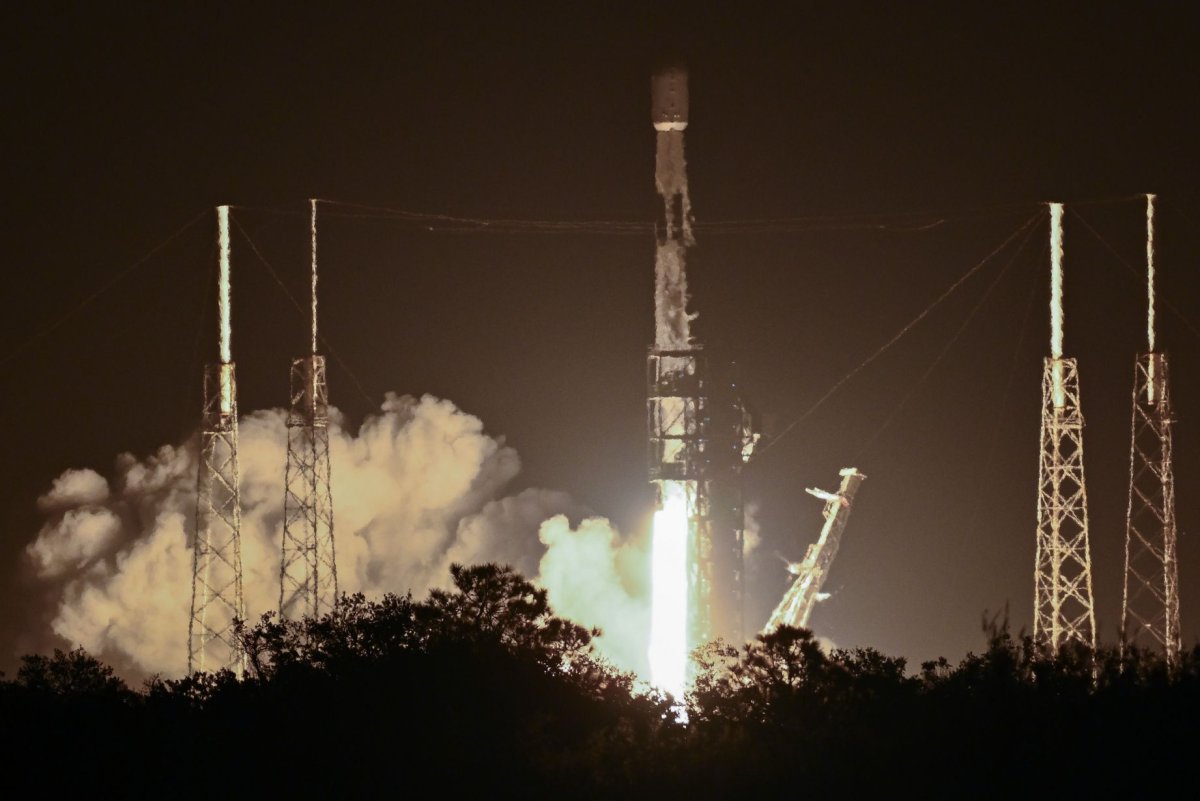
In total, SpaceX added 45 Starlink Satellites to its growing constellation of more than 5,000 orbitals in low-Earth orbit that provide high-speed, low-latency Internet the globe over.
The first SpaceX Falcon 9 launch blasted off against the backdrop of a dark Florida sky at 8:10 p.m. EST Sunday, carrying 23 Starlink satellites that were deployed into low-Earth orbit.
The mission was in question just 40 seconds before the scheduled liftoff due to a high wind advisory at Launch Complex 39A at NASA’s Kennedy Space Center. It was the 74th launch of a Falcon rocket from this pad (including nine Falcon Heavy rockets), according to SpaceX.
After a 13-second fiery entry back into Earth’s atmosphere, the reusable booster, named 1062B, landed on A Shortfall of Gravitas, a drone ship deployed to recover the booster so it can be used again. It was the 18th mission for the booster.
The second launch of a Flacon 9 rocket with a payload of 22 Starlink satellites lifted off several hours later at 9:57 p.m. PT from Space Launch Complex 4 East at the Vandenberg Space Force Base in California.
Its first-stage booster was on its ninth flight and returned to Earth where it successfully landed upon the Of Course I Still Love You droneship, which was awaiting its re-entry in the Pacific Ocean.
It was SpaceX’s 293rd and 294th launches overall, which puts the company on track to set a record. SpaceX aims to eclipse the number of launches of NASA’s space shuttles by the end of 2024.








![Grow 10 Pounds Of Potatoes In Just 30 Days With Plastic Containers [Video]](https://naijatipsland.com/wp-content/uploads/2024/11/466928459_444053232089974_5323815438965424433_n-100x56.jpg)


